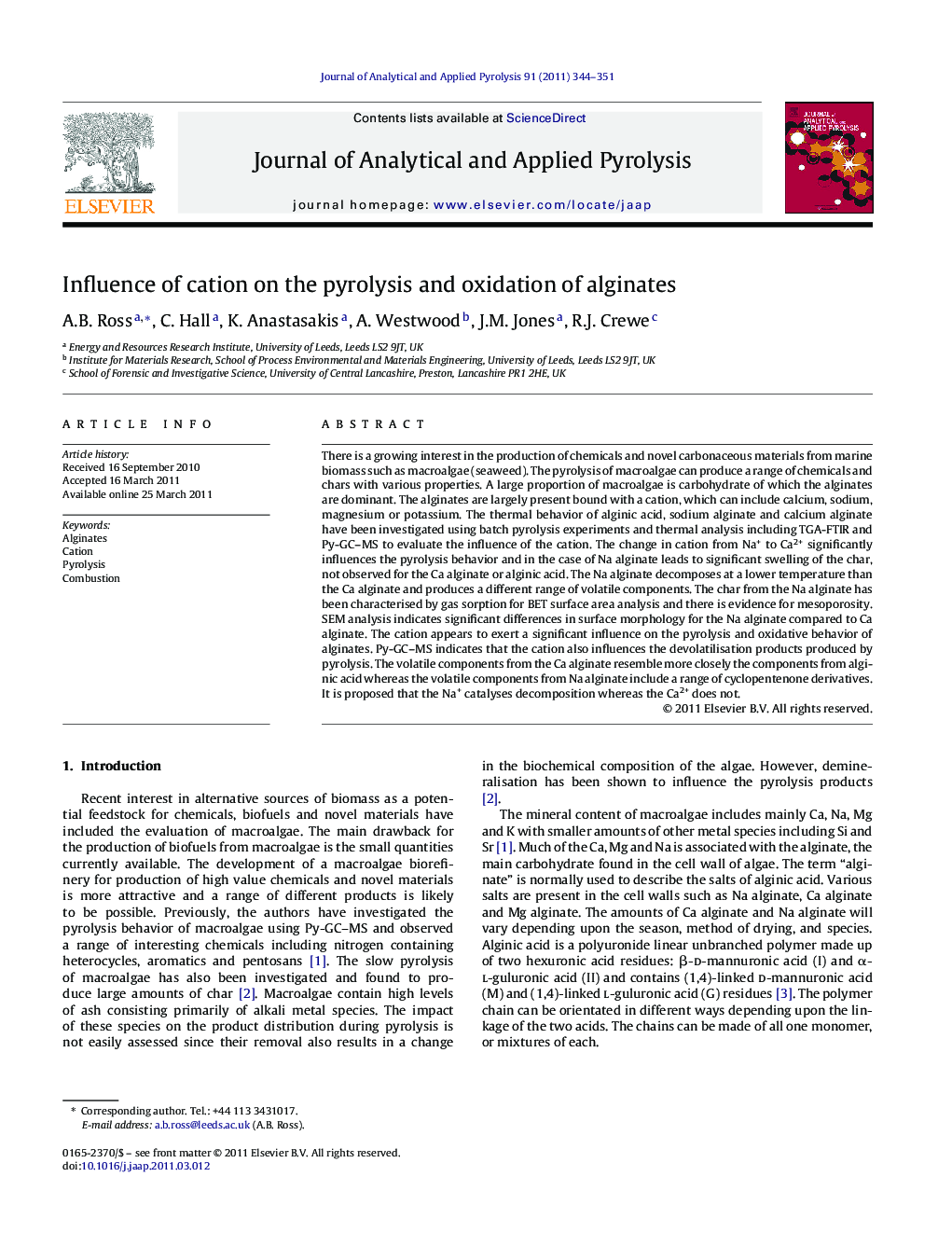| Article ID | Journal | Published Year | Pages | File Type |
|---|---|---|---|---|
| 1196952 | Journal of Analytical and Applied Pyrolysis | 2011 | 8 Pages |
There is a growing interest in the production of chemicals and novel carbonaceous materials from marine biomass such as macroalgae (seaweed). The pyrolysis of macroalgae can produce a range of chemicals and chars with various properties. A large proportion of macroalgae is carbohydrate of which the alginates are dominant. The alginates are largely present bound with a cation, which can include calcium, sodium, magnesium or potassium. The thermal behavior of alginic acid, sodium alginate and calcium alginate have been investigated using batch pyrolysis experiments and thermal analysis including TGA-FTIR and Py-GC–MS to evaluate the influence of the cation. The change in cation from Na+ to Ca2+ significantly influences the pyrolysis behavior and in the case of Na alginate leads to significant swelling of the char, not observed for the Ca alginate or alginic acid. The Na alginate decomposes at a lower temperature than the Ca alginate and produces a different range of volatile components. The char from the Na alginate has been characterised by gas sorption for BET surface area analysis and there is evidence for mesoporosity. SEM analysis indicates significant differences in surface morphology for the Na alginate compared to Ca alginate. The cation appears to exert a significant influence on the pyrolysis and oxidative behavior of alginates. Py-GC–MS indicates that the cation also influences the devolatilisation products produced by pyrolysis. The volatile components from the Ca alginate resemble more closely the components from alginic acid whereas the volatile components from Na alginate include a range of cyclopentenone derivatives. It is proposed that the Na+ catalyses decomposition whereas the Ca2+ does not.
